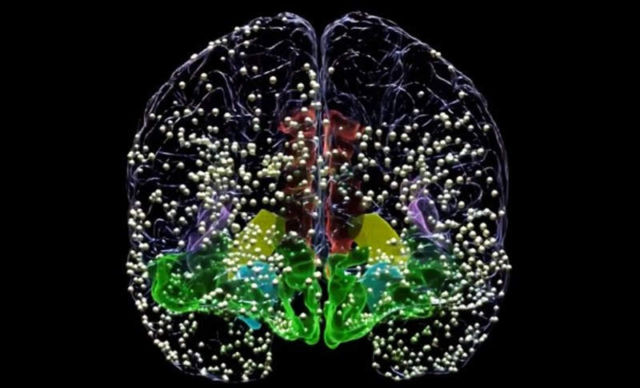Using electrical current to directly stimulate affected regions of the brain, has proven to treat intractable depression.
Patients with moderate to severe depression reported significant improvements in mood when researchers precisely stimulated a brain region called the orbitofrontal cortex (OFC), according to a UC San Francisco research study published Nov. 29, 2018, in Current Biology.
Animation still illustrates the locations of all electrode recording sites used for mapping neural activity linked with natural mood fluctuations in patients awaiting surgery for epilepsy. Animation by Ben Speidel.
The results are an important step toward developing a therapy for people with treatment-resistant depression, which affects as many as 30 percent of depression patients, the authors say.
This could be an effective therapy for treating certain forms of epilepsy and Parkinson’s disease, but efforts to develop therapeutic brain stimulation for depression have so far been inconclusive. These earlier efforts focused on stimulation of deep brain regions within the cingulate cortex and basal ganglia that are known to play a direct role in emotional processing, but much less is known about the emotion-regulating functions of the OFC, a small region on the lower surface of the brain just above the eyes.
study senior author Eddie Chang, MD, a UCSF professor of neurosurgery and member of the UCSF Weill Institute for Neurosciences whose research lab studies the neuroscience of language and mood, said:
“The OFC has been called one of the least understood regions in the brain, but it is richly connected to various brain structures linked to mood, depression and decision making, making it very well positioned to coordinate activity between emotion and cognition.”
source UCSF






Leave A Comment